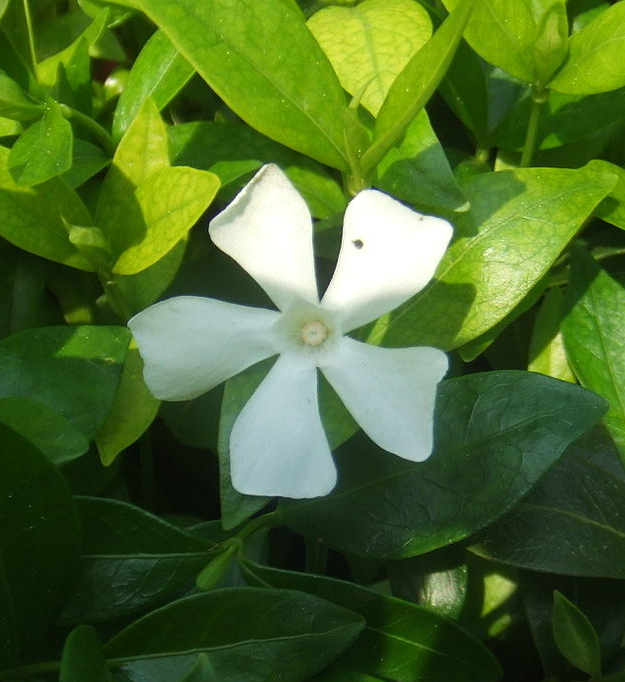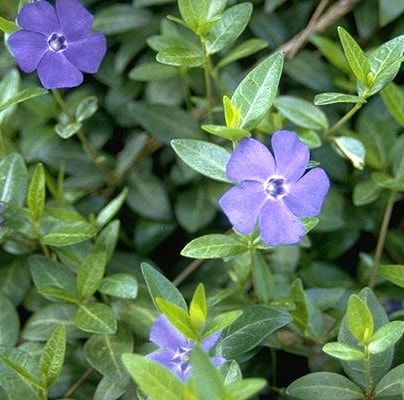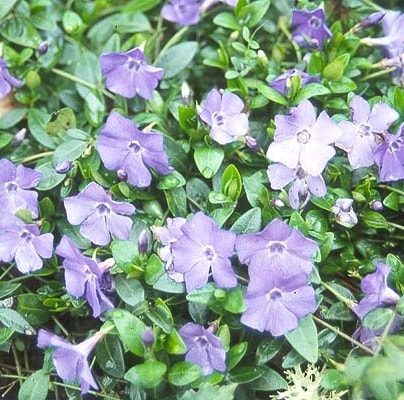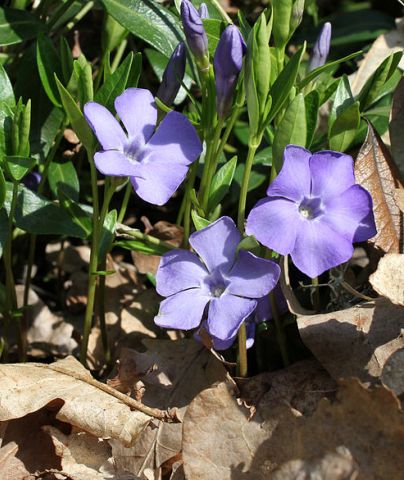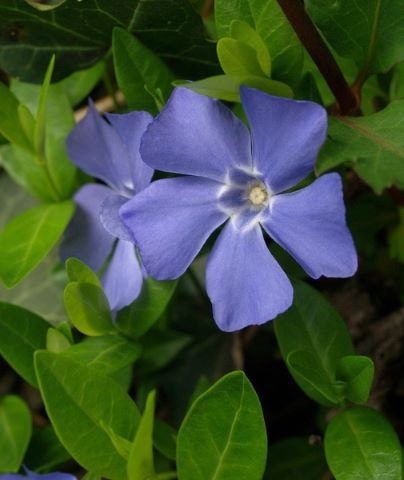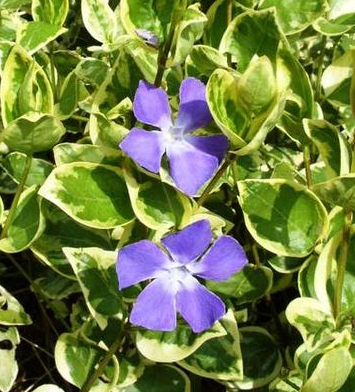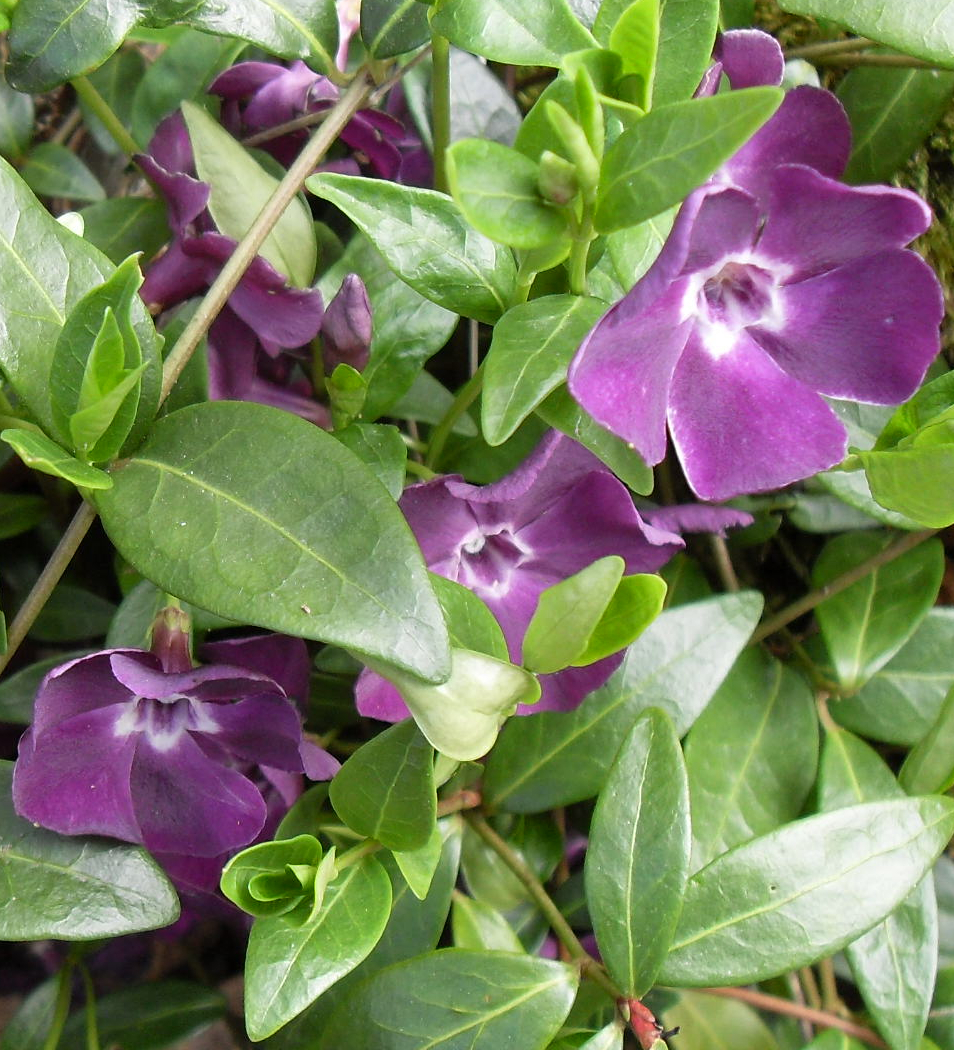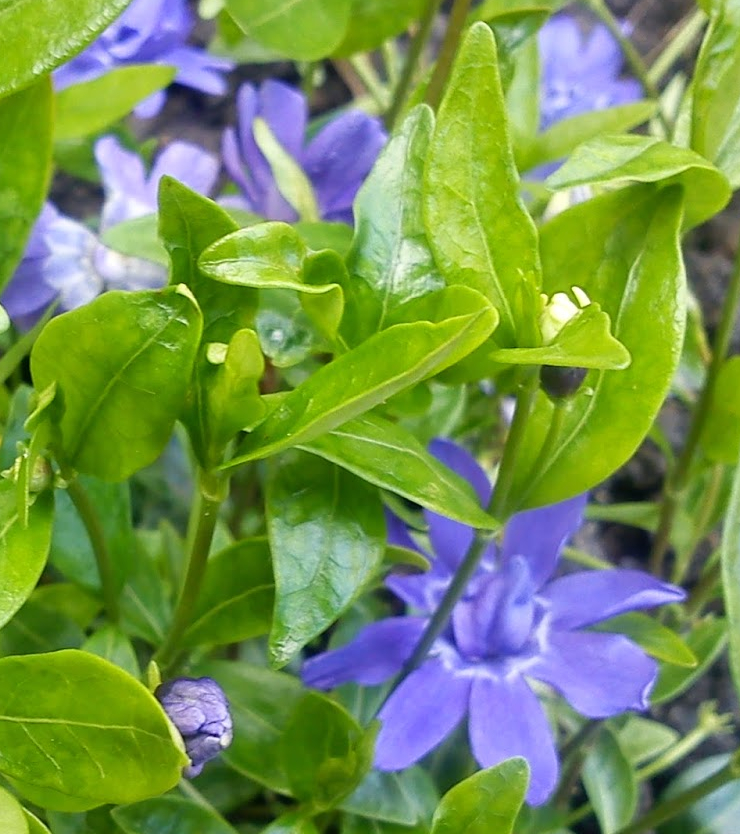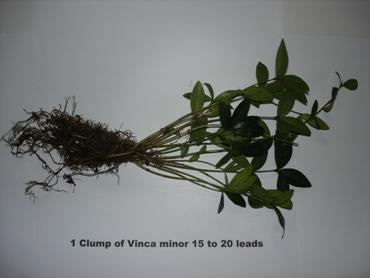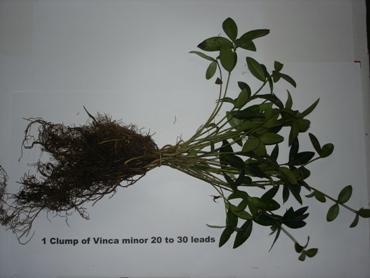According to Michael A. Dirr's Manual of Woody Landscape Plants ...
Common Name:
Periwinkle, Lesser Periwinkle, Myrtle, and Creeping Myrtle
Popular Varieties:
Argenteovariegata, Atropurpurea, Azurea Flore Pleno, La Grave
Type:
Perennial Groundcover
Family-Genus-Species:
Apocynaceae Vinca minor
Sun Requirements:
Partial Sun to Full Shade
Size:
3-6" high, ground-hugging plant
Leaves:
Leaves are opposite, simple, elliptic, and evergreen with new growth emerging early, often March, in a handsome yellow green.
Hardiness:
Zone 3 to 8, can be grown further north when protected by snow. For an idea of your plant zone please visit the USDA Plant Hardiness Zone Map.
Habit:
Low growing, prostrate, mat forming evergreen ground cover, spreading indefinitely
Rate:
Medium to fast; in a loose, organic, well drained soil will fill in very fast.
Flowers:
Perfect, lilac-blue, 1" diameter, March-April. Deadhead after blooming and divide plants in fall or spring to keep them within their bounds.
Soil Preference:
Will grow in moist, well-drained, loamy, sandy or clay soils. Vinca minor is not picky.
Landscape Value:
Excellent ground cover; the dainty blue flowers are handsome as is the lustrous foliage; plant on 1' centers; makes its best growth in shade and here can form large carpets under the leafy canopy; the new growth emerges a rich spring green and the flowers appear at the same time; flowers over a long period; never really spectacular unless viewed close up; too often large seas of the plant are used in dense shade
Fertilization:
While decaying leaves are a suggested source of nutrition for the plant, you can fertilize with basic store bought plant foods (both slow release solid and water soluable) and manure for established plants every other year. It is recommended that you fertilize in the early spring of these years.
Diseases & Insects:
Blight, canker and dieback, leaf spots, and root rot; the canker and dieback (Phomopsis livella) disease have been significant problems, the shoots become dark brown, wilt, and die back to the surface of the soil.
Planting Instructions:
Start at the farthest away area and plant the 'groundcover' evenly and outwards (like painting yourself into a corner). Water well, and remember to water regularly until they have started to grow.
